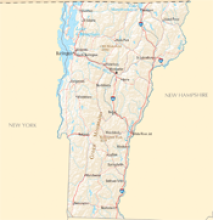Rural Vermont Fiber Update
Vermont's proposed East Central Fiber Network is moving forward, confident that the strength of their application for federal broadband stimulus funding will get them an award. Atlantic Engineering has been surveying pole and prepping so they can get started as soon as possible.
They are also offering network-branded apparel - it reads: ECFiber.Net Community owned Fiber-Optic network. I think this is pretty fricking cool - it shows the enthusiasm these folks have.
Geoff Daily has given EC Fiber his stamp of approval:
First off, compared to the VTel project, I'm immediately inclined to favor ECF's by the simple fact that they're a public project, which the original stimulus language suggested should get priority, and they're looking for a loan rather than a grant, and I think so long as a project will be self-sustaining, it's always better to loan money that you'll get back some day than to just give handouts of free money. I also prefer ECF's project because they're going to be bringing fiber to every home in their service area. They're not going to leave anyone behind, creating second-class digital citizens. Finally, I think that ECF's project has a greater chance of establishing a model that the rest of the country can learn from, proving both that fiber can be economical in rural areas and that open multi-service networks can be financially viable.Vermont was also one of the four states to receive the first awards for mapping broadband.



